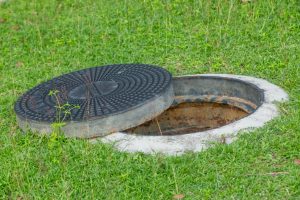The term ‘vertical farming’ is a relatively new one, yet you may have seen a version of it already in hip, downtown restaurants: floor-to-ceiling shelves of produce that can seemingly supply the venue. But more than just an interior design fad, vertical farming is being eyed by researchers as a key piece of technology that could usher in a new age of urban sustainability.
Urban Sustainability
When we talk about urban sustainability, we talk about a city’s capability to survive without putting pressure on the countryside for its resources. Simply put, urban sustainability seeks to urban dwellers self-sustaining by providing them with renewable sources of energy, products, and food.
In doing so, urban sustainability seeks to minimize, even eradicate, the ecological footprints of entire cities by reducing the amount of pollution possible. With this in mind, scientists devised vertical farming as a way to create opportunities for urban populations to grow food in limited, often cramped, spaces.
What is Vertical Farming?
Vertical farming as a formal concept was initially developed by Professor Dickson Despommier, a medical ecology researcher from Columbia University. In his original concept, Professor Despommier wanted to develop a system that could grow food in disused urban spaces using existing practices, such as hydroponics and aeroponics. The nature of vertical farming, with its polymer troughs containing plants stacked on top of each other, means that the use of soil must either be minimized, or foregone altogether. Not only does this create a system that requires less maintenance, it also lessens widespread soil degradation in the environment. Professor Despommier argues that, with vertical farming, urban spaces can grow significant amounts of food using minimal space and produce zero waste.
The sustainability of vertical farming is argued by many, with researchers seeing it as a ‘closed loop’ system, that is, a system that recycles its waste effectively. In the case of many vertical farming systems, the only waste material produced is water, but the “waste” water produced is normally viable enough to be used again in the system. Because most vertical farming systems are built indoors, it can produce a variety of fresh foods year-round, underlining its potential as a sustainable source of produce.
Types of Vertical Farming
Vertical farming systems use a variety of techniques to grow food:
 Hydroponics: The most common system for growing food in vertical systems. Over the past few years, it has grown in importance as more and more people use it and are finding ways to perfect it. Hydroponics can grow food using zero soil because it submerges the root system of plants in a solution rich with vitamins, minerals, and nutrients.The water is circulated throughout the process to ensure that the solution remains balanced and the plant receives the right amount of nutrients.
Hydroponics: The most common system for growing food in vertical systems. Over the past few years, it has grown in importance as more and more people use it and are finding ways to perfect it. Hydroponics can grow food using zero soil because it submerges the root system of plants in a solution rich with vitamins, minerals, and nutrients.The water is circulated throughout the process to ensure that the solution remains balanced and the plant receives the right amount of nutrients.
 Aeroponics: First pioneered by NASA as a means of growing food in space, aeroponic systems use a misting system to grow plants using zero soil and minimal water. While it uses 90% less water than hydroponic systems, aeroponics are still a developing technology with various kinks that need to be ironed out.
Aeroponics: First pioneered by NASA as a means of growing food in space, aeroponic systems use a misting system to grow plants using zero soil and minimal water. While it uses 90% less water than hydroponic systems, aeroponics are still a developing technology with various kinks that need to be ironed out.
One of the problems with aeroponics is that it requires more equipment and specialized know-how to use. Another issue with aeroponics is that the plants grown using this technique require more nutrients than plants grown with a different system. However, because of the extra amount of vitamins necessary, plants grown using aeroponics are generally more nutritious than their hydroponic counterparts.
Aquaponics: While technically new to the field of vertical farming, aquaponic systems are an ancient technique  used by the Aztecs, the Chinese, and most of Southeast Asia. An aquaponic system combines hydroponics with aquaculture and is aimed at using both in a single ecosystem. Aquaponics uses fish waste, a naturally rich source of plant nutrients, to fertilize plants, while a portion of the plants grown are used to feed the fish. In this way, waste is kept at a minimum, with wastewater being filtered out by the plants and fish waste being consumed by the plants as well.
used by the Aztecs, the Chinese, and most of Southeast Asia. An aquaponic system combines hydroponics with aquaculture and is aimed at using both in a single ecosystem. Aquaponics uses fish waste, a naturally rich source of plant nutrients, to fertilize plants, while a portion of the plants grown are used to feed the fish. In this way, waste is kept at a minimum, with wastewater being filtered out by the plants and fish waste being consumed by the plants as well.
An aquaponic system can potentially feed a larger amount of people than the other two systems; however, much like aeroponics, they require specialized equipment and a background in aquaculture. But if utilized properly an aquaponic system’s efficiency can double the amount of food that a single vertical farm can produce.
Might become more popular with the popularity of new standardized aquaponic systems.
But Is it Worth it?
 Arguments against the use of vertical farming lies in its cost: the financial viability of vertical farms remain problematic, as current systems are still imperfect and can only produce a limited amount and variety of food. Another key problem is energy: vertical farming systems require a significant amount of energy, as any of the three systems mentioned need constant power to circulate the water, monitor plant growth, and, if grown indoors, regulate temperature and light. The energy requirements of substantial produce, like potatoes and other root vegetables, makes vertical farming for specific types of foods expensive.
Arguments against the use of vertical farming lies in its cost: the financial viability of vertical farms remain problematic, as current systems are still imperfect and can only produce a limited amount and variety of food. Another key problem is energy: vertical farming systems require a significant amount of energy, as any of the three systems mentioned need constant power to circulate the water, monitor plant growth, and, if grown indoors, regulate temperature and light. The energy requirements of substantial produce, like potatoes and other root vegetables, makes vertical farming for specific types of foods expensive.
But scientists remain hopeful. While current systems are used to cater to high-end markets, researchers are tirelessly working to perfect these systems and make it more accessible to private homeowners. Home hydroponics and aquaponic systems are fast becoming popular with DIY enthusiasts, although, as mentioned, the costs remain high.
With technological advancements in the horizon, it wouldn’t be surprising to see houses and apartment complexes utilizing vertical farming to become self-sustaining.






